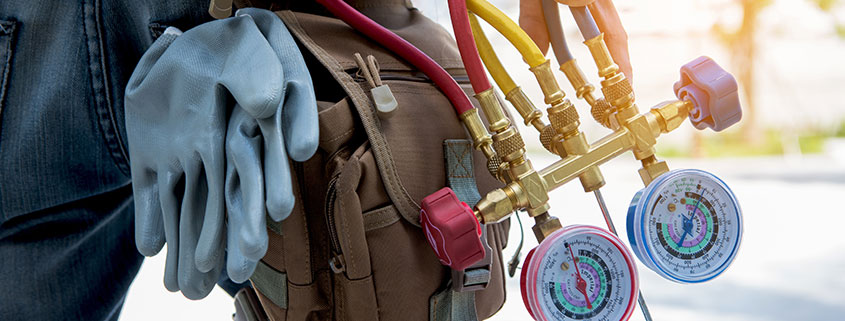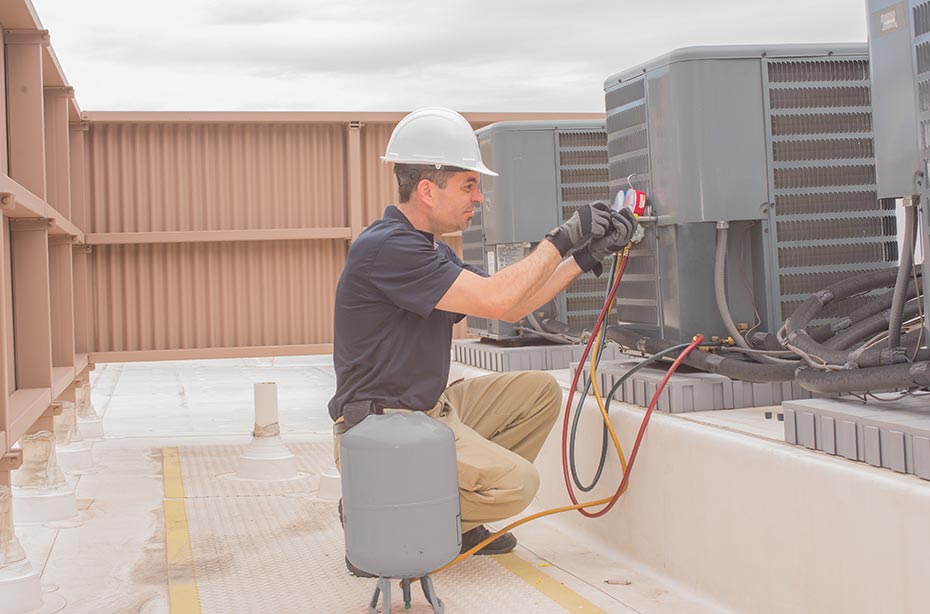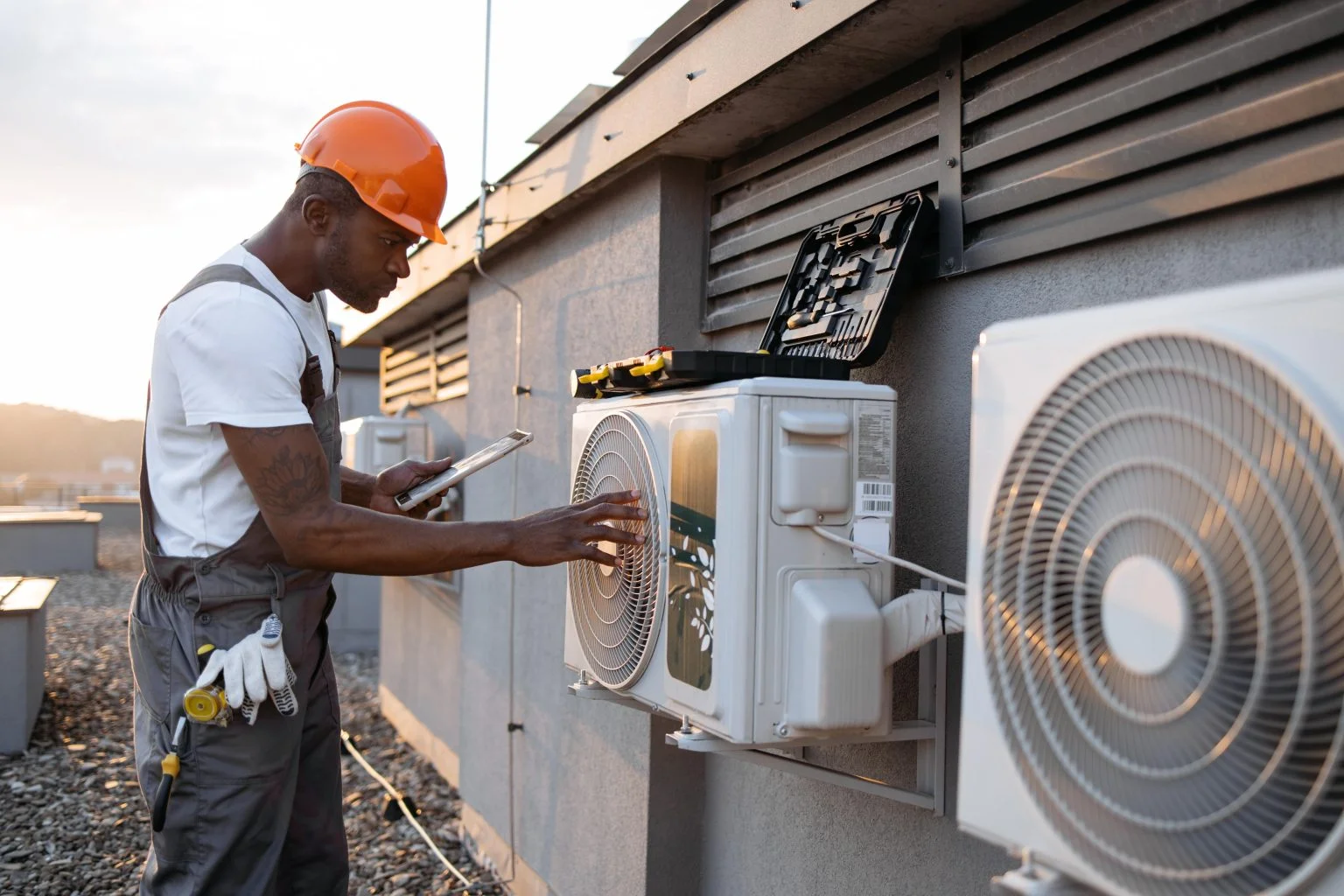Homeowner’s Guide to heat pump replacement ooltewah tn
Homeowner’s Guide to heat pump replacement ooltewah tn
Blog Article
Just How a Heatpump and Heater Collaborate to Enhance Your Home's Home heating Performance
Comprehending just how a heat pump and heating system collaborate is vital for homeowners seeking effective home heating options. Each system has its strengths, supplying a balanced technique to home convenience. The heatpump succeeds in modest temperatures, while the furnace delivers fast warmth during severe cold. This harmony not only minimizes power prices but also boosts the life-span of both devices. What factors influence this partnership, and just how can home owners maximize their benefits?
Comprehending Heat Pumps: How They Function
Although many individuals may be unknown with their inner functions, heat pumps play an essential duty in contemporary heater. These tools run by moving warmth from one location to one more, utilizing the principles of thermodynamics. In chillier months, a heat pump removes heat from the outside air, ground, or water, and transfers it inside your home to warm the space. Conversely, during warmer months, it can reverse the process, functioning as an ac unit by removing heat from inside to the outside.Heat pumps consist of an evaporator, condenser, compressor, and growth valve. The refrigerant within the system takes in warmth as it vaporizes at reduced temperature levels and stress. The compressor after that raises the pressure and temperature of the cooling agent, permitting it to release warmth as it condenses. This reliable process can significantly decrease energy intake compared to standard heating approaches, making heatpump a sustainable selection for climate control in homes.
The Role of Heaters in Home Heating
Heaters play a crucial duty in home heating by offering a trustworthy resource of heat throughout the colder months. They run by generating heat through burning or electric resistance, dispersing it throughout the home through ducts or radiant systems. The effectiveness of a heating system is typically gauged by its Annual Fuel Use Efficiency (AFUE) rating, which suggests just how properly the system converts gas into heat.Furnaces can utilize various energy resources, including gas, oil, propane, or electrical power, enabling property owners to pick one of the most appropriate alternative for their requirements. Unlike heatpump, which might battle in extreme cool, heating systems maintain regular efficiency, making sure that interior temperature levels stay comfy regardless of exterior problems. Furthermore, modern heaters frequently come geared up with innovative technology, such as clever thermostats and variable-speed blowers, enhancing their efficiency and responsiveness. This adaptability makes heating systems a vital element in all-encompassing home heating techniques.

Advantages of Utilizing Both Equipments Together
Incorporating the staminas of both heaters and heatpump can lead to an extra reliable and efficient home heating option. Utilizing both systems allows homeowners to make the most of the heatpump's power efficiency throughout milder temperatures while depending on the heater for more severe cold conditions. This twin strategy can greatly decrease energy costs, as warmth pumps eat much less electrical energy than typical home heating techniques when temperatures are moderate.Additionally, making use of both systems with each other can boost comfort levels in the home. Heatpump can provide consistent, also heating, while heating systems can promptly elevate ambient temperatures when needed. The assimilation of both systems can expand the life-span of tools by lowering wear and tear on each device, as they share the work. Eventually, home owners can enjoy a well balanced, cost-effective home heating remedy that adjusts seamlessly to varying weather, ensuring a warm and welcoming home throughout the cold weather.
Exactly How Heat Pumps and Furnaces Enhance Each Other
They create a corresponding heating system that takes full advantage of efficiency and convenience when house owners incorporate warm pumps and furnaces. Heat pumps run by moving warm from the outdoors air or ground, making them extremely efficient in moderate environments. They excel throughout milder temperature levels, offering economical heating. Alternatively, heaters generate warm via combustion or electrical resistance, delivering strong, immediate heat throughout severe cool conditions.The combination of these two systems allows for vibrant changes based upon temperature fluctuations. During warmer months or milder wintertime days, the heatpump can take the lead, conserving energy and lowering costs. As temperature levels decline, the furnace can effortlessly engage, guaranteeing regular warmth throughout the home. This harmony not just enhances energy usage but also enhances the lifespan of both systems, as each unit operates within its excellent performance range. Together, they develop a well balanced setting that adapts to varying environment needs.
Maximizing Effectiveness: Tips for Homeowners
Property owners can improve their home heating effectiveness through several sensible strategies. Developing a normal maintenance timetable, integrating wise thermostat modern technology, and carrying out reliable insulation and sealing solutions are essential actions. These procedures not only boost comfort yet additionally lower energy prices.
Normal Maintenance Arrange
To ensure optimal home heating effectiveness, establishing a routine maintenance routine is vital for any kind of home. Home owners ought to prioritize routine examinations of both heat pumps and heaters to determine peak efficiency. This consists of transforming air filters every one to three months, as blocked filters can considerably minimize performance. In addition, scheduling specialist upkeep at the very least once a year enables service technicians to recognize and deal with prospective advice issues prior to they rise. Property owners ought to also clean up the heatpump's outdoor unit to protect against particles buildup that can prevent airflow. By sticking to a routine maintenance schedule, homeowners not only enhance their heating systems' effectiveness but likewise expand their life-span, bring about better convenience and reduced power expenses throughout the cooler months.
Smart Thermostat Combination
Integrating a smart thermostat right into a home heater can significantly boost energy effectiveness, specifically as it permits for exact control over temperature level setups. These devices can find out the property owner's schedule and preferences, automatically readjusting the temperature to enhance convenience while decreasing power use. They can lower home heating throughout times when the home is unoccupied, minimizing unnecessary consumption. Several clever thermostats likewise supply real-time power use information, enabling home owners to make informed decisions concerning their home heating habits. Furthermore, remote accessibility through smartphone applications permits individuals to readjust settings from anywhere, making certain the home is cozy upon return. In general, smart thermostat assimilation not just improves convenience yet substantially adds to energy cost savings and efficiency.
Insulation and Securing Solutions
Smart thermostats play a Click Here crucial duty in energy effectiveness, but their performance can be considerably enhanced by correct insulation and securing solutions. Homeowners must prioritize protecting floorings, wall surfaces, and attic rooms to reduce warm loss. Top quality insulation materials, such as spray foam or fiberglass, can significantly boost thermal resistance. Furthermore, securing gaps around air ducts, doors, and windows stops chilly air infiltration and heat getaway. Weatherstripping and caulking work methods for addressing these leaks - furnace replacement. Normal evaluations for air leaks, in addition to the usage of blower door tests, can aid recognize trouble locations. By buying insulation and securing, property owners can enhance the efficiency of their furnace, inevitably bring about decreased power usage and reduced utility costs
Usual Myths Regarding Warm Pumps and Furnaces
What misunderstandings border heatpump and heating systems? Numerous people mistakenly think that heatpump are inadequate in chillier environments. In truth, modern-day warmth pumps are developed to run successfully also in reduced temperatures, offering reputable heating throughout wintertime. An additional typical misconception is that heaters are always much more reliable than warmth pumps. This depends on the specific energy resources and performance rankings of the devices in question. Some might additionally believe that using both systems concurrently is unneeded, however actually, this combination can enhance home heating effectiveness, particularly during severe weather. Furthermore, individuals often think that warmth pumps need consistent maintenance, when in reality, they have similar upkeep requires to typical furnace. By exposing these myths, home owners can make more enlightened choices regarding their heating choices, ultimately leading to boosted convenience and energy performance in their homes.
Maintenance Considerations for Combined Solutions

Frequently Asked Concerns
Can Heat Pumps Work Successfully in Extremely Cold Climates?
Heat pumps can battle in extremely cold climates as a result of minimized effectiveness and warmth removal limitations. Nonetheless, advancements in innovation have caused versions created for far better performance in such problems, improving their feasibility in extreme settings.
The Length Of Time Do Heat Pumps and Furnaces Typically Last?
Heatpump usually last 15 to two decades, while furnaces have a life-span of 15 to thirty years. Normal maintenance can expand their durability, making sure efficient operation and decreasing the need for early replacements.

What Is the Ordinary Expense of Installing Both Solutions?
The average price of setting up both a heatpump and a furnace typically ranges in between $5,000 to $10,000 - heat pump replacement ooltewah tn. Elements affecting this price consist of system size, installment complexity, and local labor rates
Are There Tax Rewards for Making Use Of Energy-Efficient Heating Systems?
Lots of homeowners ask about tax obligation rewards for energy-efficient heating unit. Numerous federal and state programs usually offer debts or discounts, motivating the adoption of lasting innovations to decrease power intake and promote ecological obligation.
How Do I Pick the Right Size Warm Pump and Furnace?
Picking the best dimension warmth pump and heater includes determining the home's square footage, thinking about insulation quality, and evaluating regional environment. Consulting a professional can assure optimal system performance and energy effectiveness based upon details needs. ductless mini splits. Comprehending exactly how a warm pump and furnace work with each other is vital for homeowners looking for reliable heating solutions. In chillier months, a warm pump removes heat from the outside air, ground, or water, and transfers it inside your home to warm up the living area. When house owners incorporate heat pumps and furnaces, they produce a complementary home heating system that makes the most of effectiveness and comfort. Heat pumps operate by transferring warmth from the outdoors air or ground, making them highly efficient in moderate environments. Heat pumps can struggle in very cool environments due to minimized efficiency and heat removal constraints
Report this page